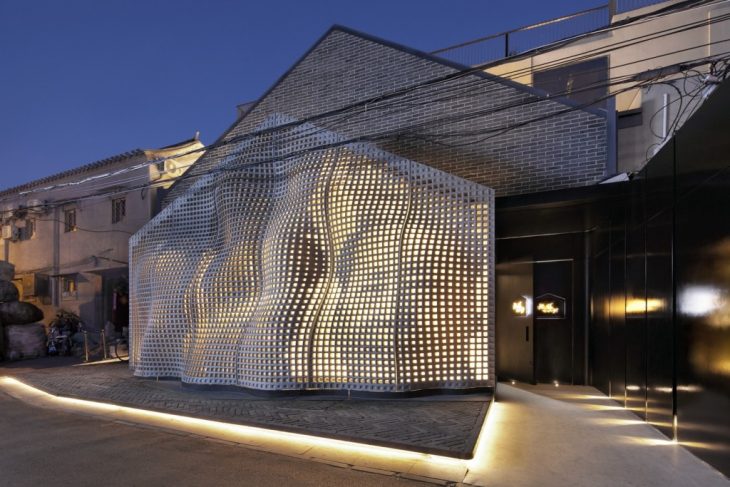
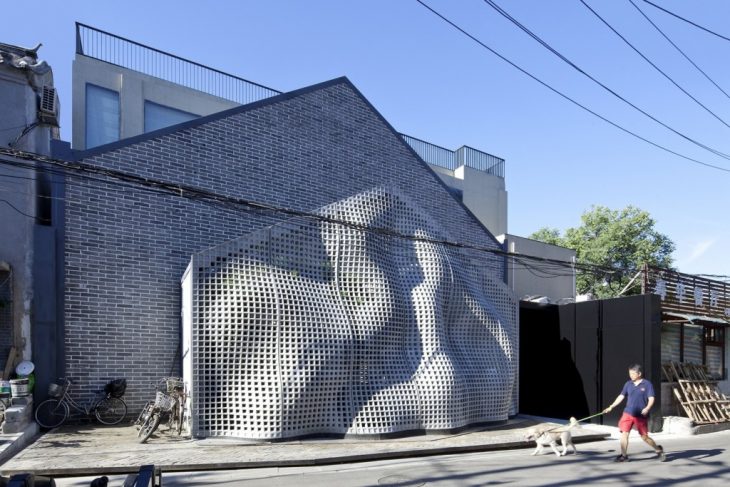
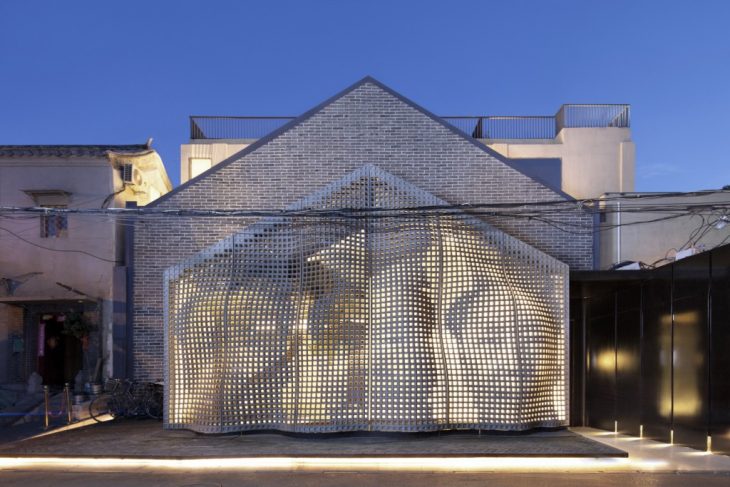
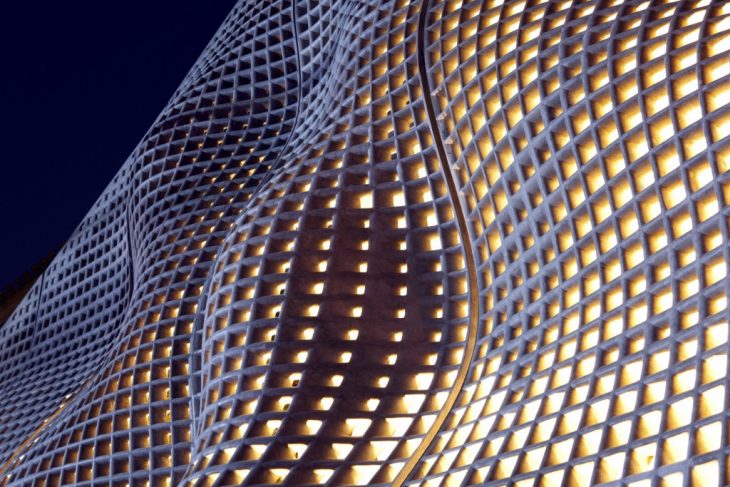
THE PSEUDO CODE
1. Control the surface with attractor points.
1a. Set basic surface from rhino.
1b. Evaluate surface and make attractor points on it.
1c. Get points on the divided surface.
1d. Get distance between attractor and surface points.
1e. Make SDL out of distance.
1f. Create surface with end points of SDL.
2. Creating the facade
2a. Get surface from Step 1 or manually from Rhino.
2b. Contour the surface.
2c. Split the surface with contour lines to get faces.
2d. Find closest points on surface with the center points of the faces.
2e. Use Image Sampler to get black&white data.
2f. Use meshes and remapped image sampler data to create picture frames with Weaverbird.
2g. Thicken the picture frames.
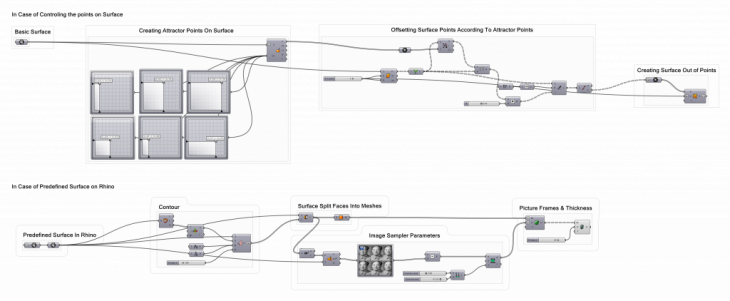
RENDER
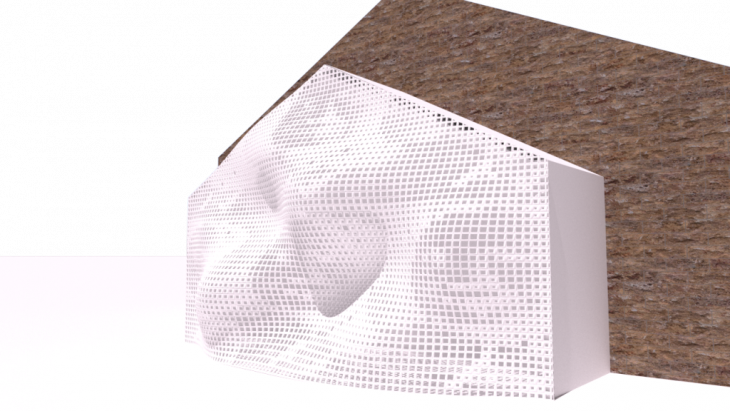
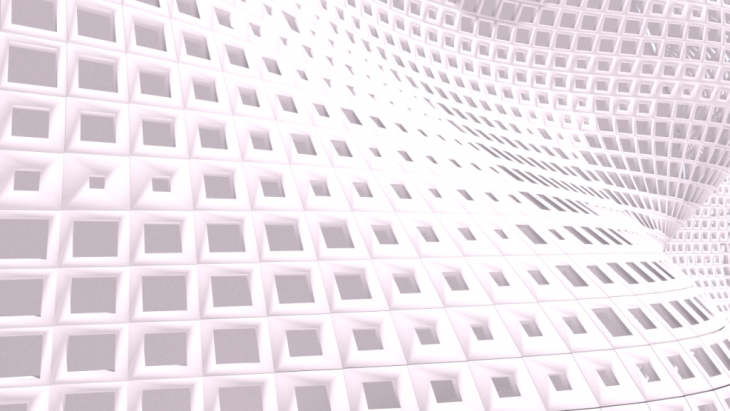
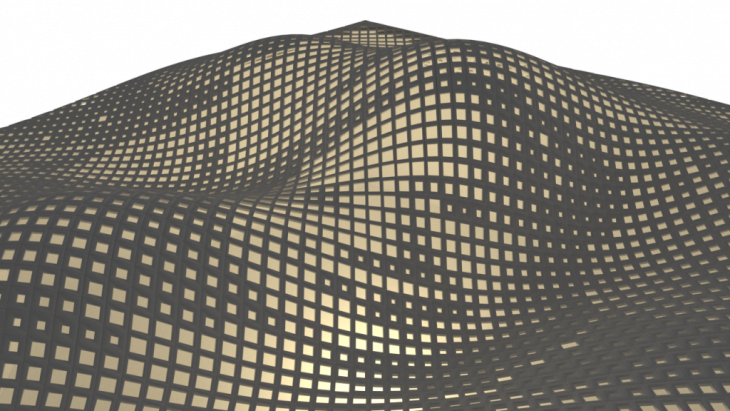
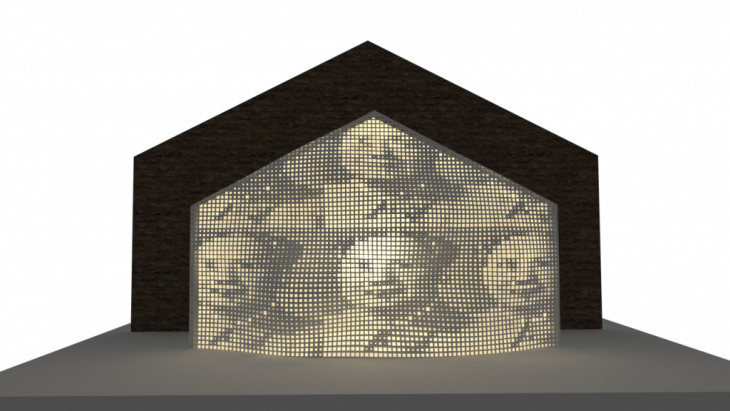
DIFFERENT PARAMETER SETTINGS
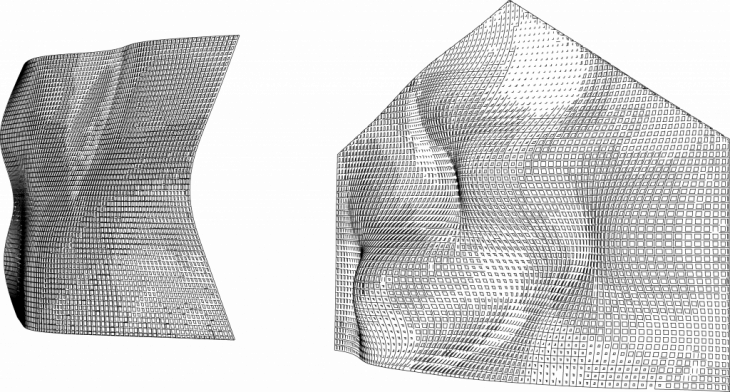
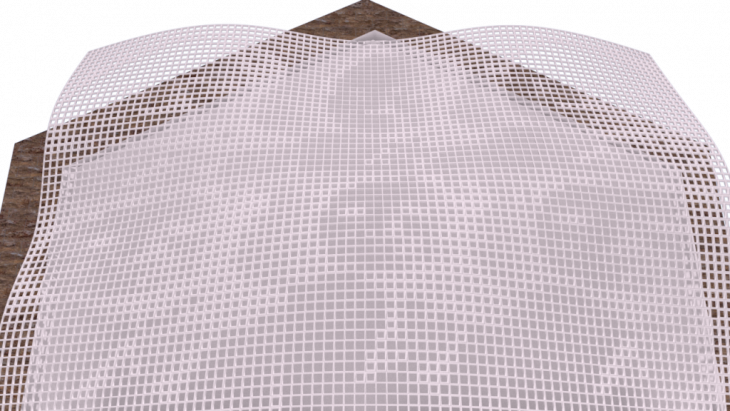
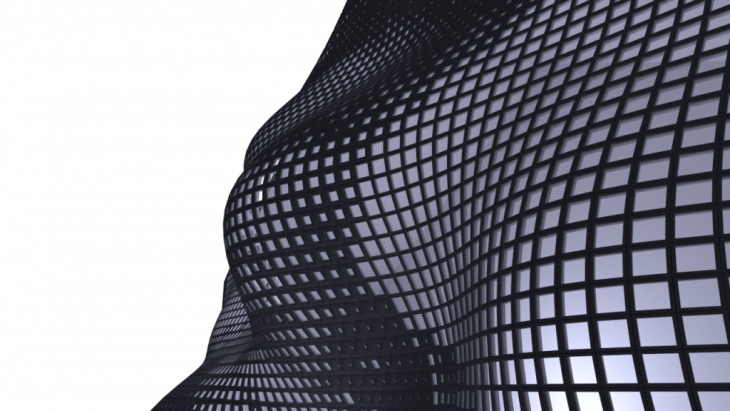
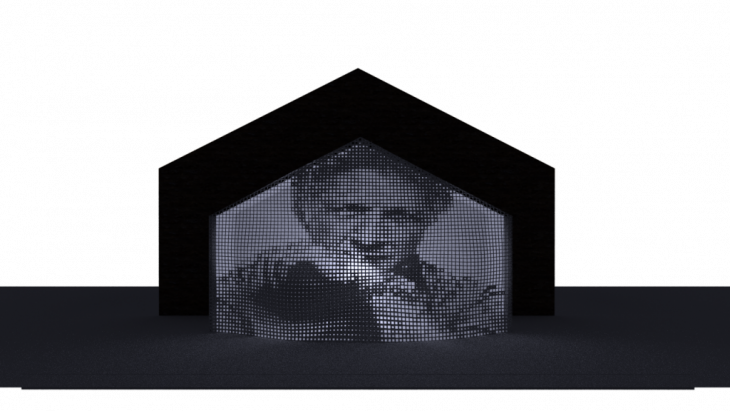
Computational Design // IaaC, Institute for Advanced Architecture of Catalonia
Developed at Master in Advanced Architecture in 2018 by:
Student: Mert Gönül
Faculty: Rodrigo Aguirre, David Andres Leon
Assistant: Daniil Koshelyuk